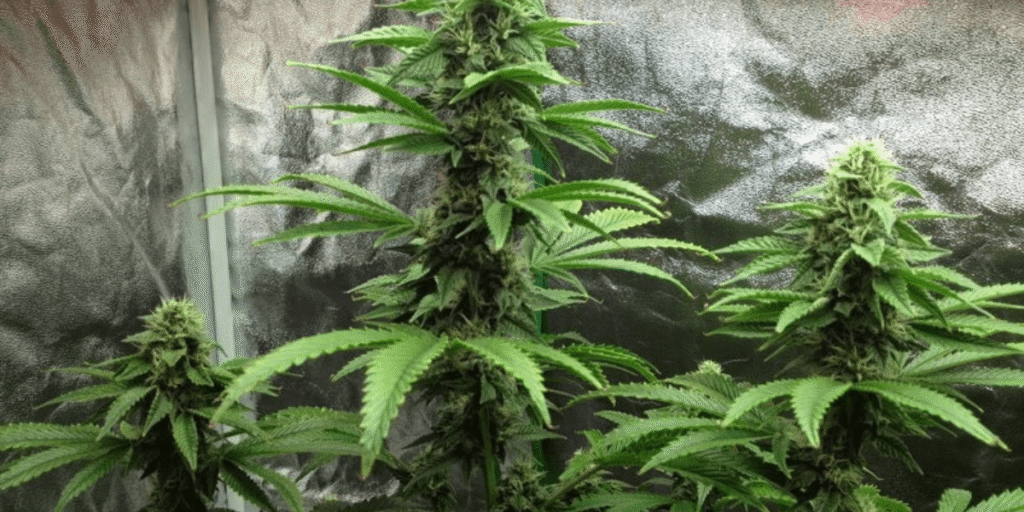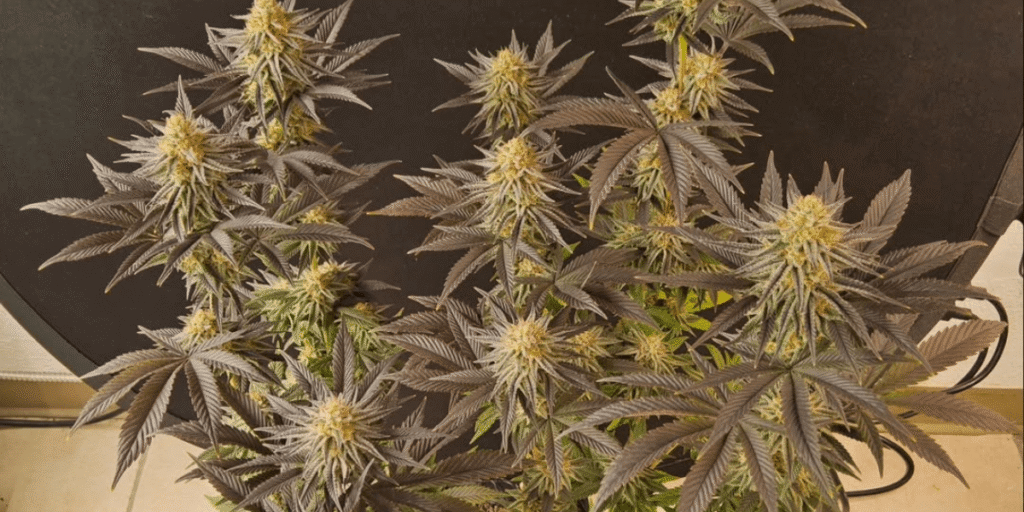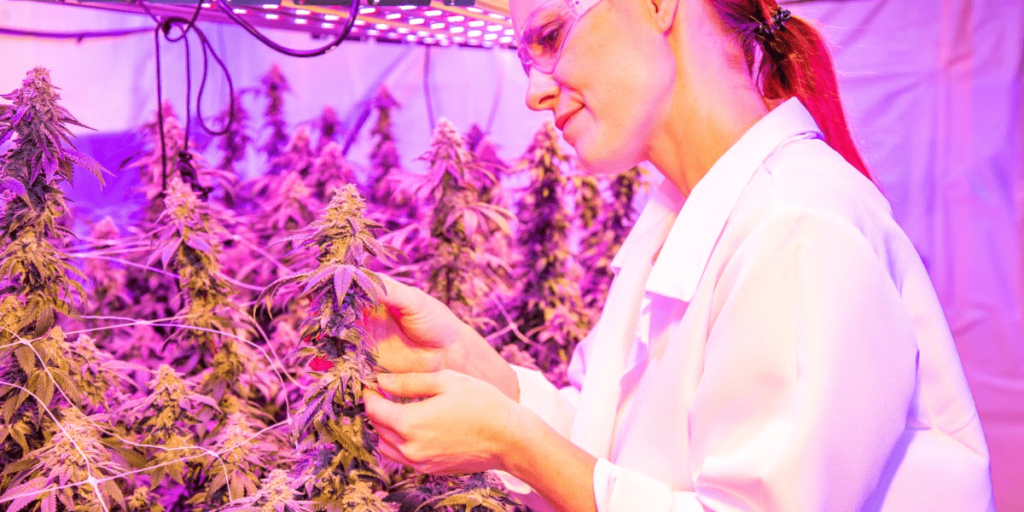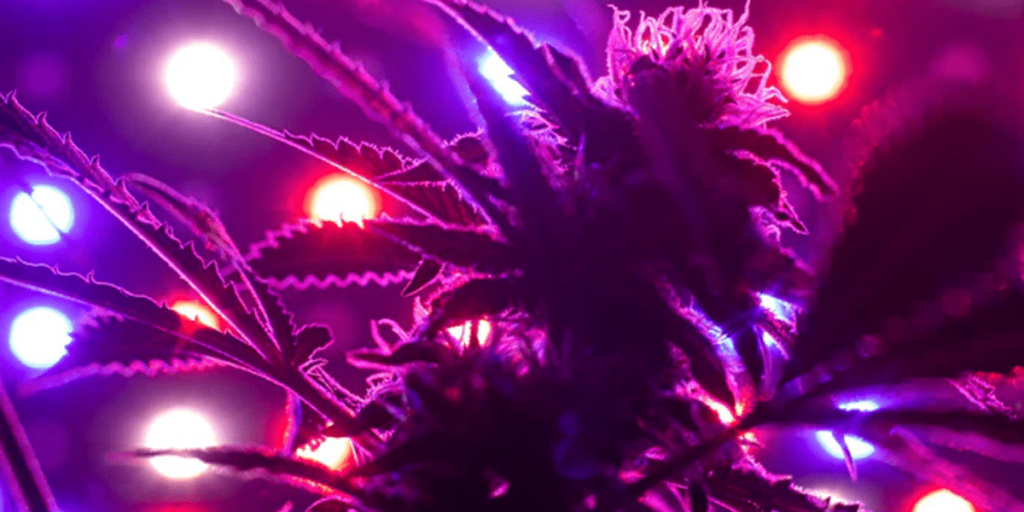Easiest Cannabis Strains to Clone let you keep your favorite plants exactly the way you love them, full of flavor, potency, and high yields. Some strains root faster and more reliably than others, making it easy to preserve your plant’s best traits without going back to seeds every time.
If you are new to cloning, it might seem intimidating at first. With the right strains and a little guidance, you can replicate your plants successfully and enjoy consistent results crop after crop. In this guide, we will highlight the most beginner-friendly strains and explain why some cuttings take root faster and stronger than others.
Why Some Cannabis Strains Excel as Cloning Prodigies
Ever wonder why some cannabis cuttings take root almost effortlessly while others seem to struggle at every turn? There is actually some fascinating plant biology behind this.
It all starts with something called cellular totipotency. Many plant cells, especially in stems and nodes, are like tiny versatile builders. They have the ability to develop into any part of the plant,roots, stems, or leaves. When you take a cutting, you are essentially activating these cells’ natural potential and telling them to start growing.
Plant hormones, especially auxin, play a key role in this process. Auxin regulates cell growth and differentiation, which is why it is so important for rooting. This is also why growers often apply rooting hormones to cuttings. The hormone stimulates cell division, creating a soft, undifferentiated tissue called callus at the cut site. From this callus, new roots begin to form, eventually establishing the cutting as a healthy young plant.
Genetics also make a big difference. Some cannabis strains respond more readily to auxin, form callus faster, and heal more quickly. That is why certain strains seem almost naturally suited for cloning. Strains with strong vegetative growth, flexible branches, and moderate spacing between nodes usually produce the easiest and most reliable clones. Knowing these traits can save a lot of time and frustration when selecting mother plants for cloning.
Genetic Stability’s Role in Successful Cannabis Cloning
The most exciting thing about cloning cannabis is that it lets you create an exact genetic copy of your mother plant. Every cutting that successfully roots will carry the same traits as the original, giving you consistency and predictability in your grow.
Unlike growing from seeds, where genetic variation is normal, similar to how children resemble their parents but are not identical, cloning acts like a copy-paste for plants. It ensures your clones maintain the same terpene and cannabinoid profiles, growth patterns, disease resistance, and even yield and flowering times as the mother.
This is especially valuable for growers who want to preserve a strain’s unique qualities. If you find a plant with exceptional flavor, potent effects, or strong resistance to pests and diseases, cloning makes sure these traits continue without surprises. For breeders, cloning is an essential tool for stabilizing elite genetics and reliably producing top-quality plants crop after crop.
Best Rooting Mediums for Healthy Cannabis Cuttings
Cloning success starts with giving your cuttings the right environment, and selecting the right rooting medium is key. Each medium handles water retention, airflow, and pH differently, and picking the right one can make a big difference in whether your clone thrives.
Rockwool is inert with a neutral pH, letting you control nutrients precisely. It balances water retention and aeration but should be soaked in pH-adjusted water before use.
Coco Coir holds moisture well and allows air to reach roots, supporting beneficial microbes. It usually needs rinsing and buffering to stabilize pH.
Peat Moss or Peat Plugs maintain consistent moisture and provide a stable environment, though their acidity should be considered for nutrients.
Hydroponic systems like DWC or aeroponics supply high oxygen directly to roots, speeding up rooting but requiring careful monitoring and equipment.
No matter which medium you choose, keep it moist yet well-aerated. This balance helps your cuttings stay healthy, reduce stress, and develop strong roots ready for successful growth.

Top Cannabis Strains for Cloning Beginners
If you’re just getting started with cloning, picking the right strain can make a huge difference. Some plants are naturally more forgiving and easier to root, which can save you a lot of frustration. Here are a few strains that beginners often have the most success with:
Blue Dream is famous for its vigorous growth and generous vegetative production. Its strong, flexible branches root easily, and it adapts well to different growing conditions, making it a reliable choice for new growers.
Northern Lights is a classic Indica-dominant strain that is incredibly resilient. Its cuttings consistently establish roots quickly, and the plant is easy to manage even if you’re still learning about humidity, light, and watering balance.
Green Crack, a Sativa-dominant strain, is known for its energy and rapid growth. Its cuttings take root fast, which is perfect if you want to see results quickly and learn the cloning process with minimal stress.
OG Kush is an iconic hybrid that has a strong track record for cloning success. Its branches form callus easily, and it tends to handle small environmental hiccups better than many other hybrids.
White Widow is another globally recognized hybrid with strong vitality. Its cuttings usually root in a relatively short time, making it a favorite among both beginners and experienced growers alike.
Starting with these strains can help you avoid common cloning mistakes and give you a higher chance of success. Choosing plants that are naturally easier to root lets you focus on learning proper technique and caring for your clones without constant worry.
Step-by-Step Cloning Process for Cannabis Strains
Cloning cannabis isn’t complicated. As long as you follow the correct steps and practice patience, success is within reach:
| Step | Action | Tips & Details |
|---|---|---|
| 1 | Select Mother Plant | Pick a healthy, vigorous mother in vegetative growth, free of pests and disease. Strong branches make rooting easier. |
| 2 | Prepare Tools | Sterilize scissors or scalpel, have rooting hormone, moist medium, LED light, and humidity dome ready. |
| 3 | Take Cutting | Choose a branch with 2–3 nodes, cut at 45° angle below a node. Quick, clean cuts reduce stress. |
| 4 | Trim Leaves | Remove leaves that touch the medium. Cut large upper leaves in half to reduce moisture loss. |
| 5 | Apply Rooting Hormone | Dip cut end in gel or powder to stimulate root growth and improve success rate. |
| 6 | Insert in Medium | Gently place cutting into pre-moistened rockwool, coco coir, or starter cube. Ensure good contact without packing tightly. |
| 7 | Cover with Humidity Dome | Maintain 70–90% humidity to prevent dehydration while roots develop. |
| 8 | Provide Light | Position dome under LED 12–24 inches away. Use gentle light, 18/6 or 24/0 schedule. Avoid intense light. |
| 9 | Daily Care | Mist lightly, monitor for stress or rot, and keep conditions stable. |
| 10 | Wait for Roots | Most clones root in 7–14 days. Patience and consistency are key. |
Patience is key! Most clones root in 7–14 days, though some strains take longer. For detailed next steps, check out our full cannabis cloning guide.

Must-Have Tools for Effective Cannabis Cloning
Having the right tools will make your cloning journey much smoother:
- Sterile Scissors or Scalpel: Make sure your blades are sharp and disinfected. A clean cut reduces stress on the plant and prevents infections from taking hold.
- Rooting Hormone (Gel/Powder): This is what really kickstarts root growth. It encourages the cutting to develop roots faster and healthier.
- Rooting Medium: Choose a medium that holds moisture but still allows airflow, like rockwool cubes, coco coir blocks, or hydroponic starter plugs. Each has its own benefits depending on your setup and experience level.
- Small LED Grow Light: Young cuttings don’t need intense light. A gentle, consistent LED helps them grow without burning or stressing the leaves.
- Humidity Dome or Clear Propagation Tray: High humidity is critical for cuttings. A dome or tray keeps the air around your clone moist, preventing it from drying out too quickly.
- Spray Bottle: Use it to lightly mist leaves and maintain humidity inside the dome. Daily check-ins make a big difference.
- pH Testing Kit: The water and medium should be slightly acidic, usually between 5.5 and 6.5. Testing helps avoid nutrient uptake problems and keeps your clones healthy.
Common Cloning Errors and How to Troubleshoot Them
Even with preparation, cloning can present challenges. Don’t get discouraged! Here are some common issues and their solutions:
| Problem | Causes | Solutions |
|---|---|---|
| Cuttings Wilting and Not Rooting | Insufficient humidity, too much light, medium too dry or too wet, pathogen infection, improper cutting technique | Check humidity dome seal, adjust light distance, ensure medium is moist but not waterlogged, re-sanitize tools, maintain a clean environment |
| Leaves Yellowing or Discoloring | Initial slight yellowing is normal (using stored energy). Persistent yellowing with necrosis could indicate nutrient deficiency (after rooting), light issues, or improper medium pH | Introduce diluted nutrients once rooted, adjust light intensity, check medium pH |
| Cut End Rotting or Molding | Common in high-humidity environments. Often caused by incomplete sterilization, contaminated medium, or insufficient air circulation | Thoroughly sanitize all tools before each use, ensure medium is clean, briefly lift humidity dome daily for air exchange |
| Slow or Stalled Root Growth | Temperature, humidity, light intensity, rooting hormone concentration, or strain genetics | Maintain ambient temperature 22–26°C (72–79°F), ensure proper humidity, check rooting hormone for expiration and correct application |
Optimal Environmental & Seasonal Conditions for Cloning Cannabis
Your cloning success rate will also be influenced by environmental and seasonal factors.
- Temperature Control: Roots love warmth; 22-26°C (72-79°F) is the ideal rooting temperature range. Too low will slow down rooting, while too high can encourage bacterial growth or “cook” your cuttings.
- Humidity Control: In the initial cloning phase, cuttings lack roots to absorb water, relying entirely on absorbing moisture from the air through their leaves. Maintaining 70-90% high humidity is crucial. The humidity dome effectively creates a mini-greenhouse. However, beware of excessive humidity without proper ventilation, which can lead to fungal issues.
- Air Circulation: Even within the humidity dome, slight air circulation is beneficial to prevent pathogen growth and promote gas exchange. Briefly opening the dome for ventilation daily can help.
- Light: Clones don’t need intense light. An 18-hour on/6-hour off light cycle, combined with a gentle LED light (like a low-wattage full-spectrum LED), is sufficient. Too strong light will accelerate transpiration, dehydrating your cuttings.
While cannabis can be cloned year-round (especially in controlled indoor environments), cloning during the mother plant’s most vigorous and healthy growth period within its natural cycle can significantly boost success rates.
Post-Cloning Care Tips for Thriving Cannabis Cuttings
When you spot those tiny white roots emerging from your rooting medium, congratulations,you’ve nailed the first stage! But this isn’t the time to relax; post-cloning care is just as vital.
- Transplanting Time: When roots are 1-2 cm (0.5-1 inch) long and appear robust from the bottom of the starter cube, it’s the ideal time to transplant. Overly delayed transplanting might lead to rootbound issues, so timely action is key for healthy growth and a strong foundation.
- Caring Transplanting: When moving clones from the starter cube to a larger growing container, be extremely careful to avoid damaging the fragile new roots. Pre-dig a hole in the new medium that matches the size of the starter cube.
- Initial Feeding: Newly rooted clones have minimal nutrient demands. For the first few days, they might not need any additional fertilizers. Afterward, you can gradually introduce a highly diluted (e.g., 1/4 or 1/8 of the manufacturer’s recommended strength) low-nitrogen nutrient solution to support root and vegetative growth.
- “Hardening Off”: This is a crucial step to acclimatize your clones to their new environment. Gradually reduce the time the humidity dome covers them, increasing open exposure daily, allowing the clones to adapt to lower humidity and prevent “shock.”
- Gradual Light Increase: As your clones stabilize and grow new leaves, you can gradually increase light intensity, but always do so slowly to avoid burning them.
- Water Management: Watering after transplanting should be cautious, avoiding overwatering which can suffocate new roots. For more insights on how proper container size and method can influence your plant’s development, consider reading about how repotting affects cannabis yields.
Cannabis Cloning FAQs: Your Questions Answered
Q1: How do I choose the right cannabis strain to clone?
A1: Pick strains that are known to root easily and have strong, healthy branches. Classics and beginner-friendly varieties usually work best.
Q2: How long does it take for cannabis clones to root?
A2: Most clones start growing roots in about 7 to 14 days if you keep humidity and temperature steady.
Q3: Can all cannabis strains be cloned successfully?
A3: Many can, but some hybrids or unstable genetics are trickier and might not root as reliably as proven strains.
Q4: What’s the ideal environment for cannabis cloning?
A4: Keep clones in a warm, humid spot with indirect light. About 20–25°C and 70–80% humidity works well for root development.
Q5: How often should I water cannabis clones?
A5: Keep the medium moist but not soggy. Overwatering can cause root rot. Usually watering once a day or when the medium feels dry is enough.
Begin Your Cloning Journey with the Right Cannabis Strains
Cloning cannabis is more than just a way to multiply your plants; it’s also a hands-on way to see plant biology in action. Picking strains that are known to root easily makes a huge difference, especially if you’re new to cloning. Coupled with the right techniques and a little attention to humidity, temperature, and light, you can dramatically improve your chances of success.
Every step counts, from choosing a healthy mother plant to handling cuttings gently and giving them the right environment to thrive. Even experienced growers find that small adjustments,like checking your rooting medium or fine-tuning light intensity can turn a struggling clone into a strong, healthy plant.
Hopefully, this guide has given you the insight and confidence to start your own cloning journey. Remember that every clone you take is a chance to learn and improve. With patience and practice, you’ll soon be building a collection of robust, genetically consistent plants that reflect the best traits of your mother plants.
Start cloning with top strains today
Ready to see your cannabis cuttings thrive? Whether you’re trying a small indoor setup, running a vertical garden, or managing a bigger grow space, getting your clones to root successfully is all about the right care. Keeping cuttings healthy means clean cuts, high humidity, gentle full-spectrum light, and a little patience. Every clone that takes root is a small win and a learning opportunity.
Check out our range of LED grow lights and cloning tools at www.greenfuturelight.com. We have solutions for beginners taking their first cuttings as well as for experienced growers looking for consistent results.
If you want extra guidance, our team of horticultural specialists is happy to help you pick the best setup for your plants and space. With the right approach, cloning becomes simpler, more effective, and way more rewarding.
Connect with other growers and share your experiences on Instagram @Greenfuturelight. Swap tips, ask questions, and celebrate every successful clone with a community that loves growing as much as you do.



